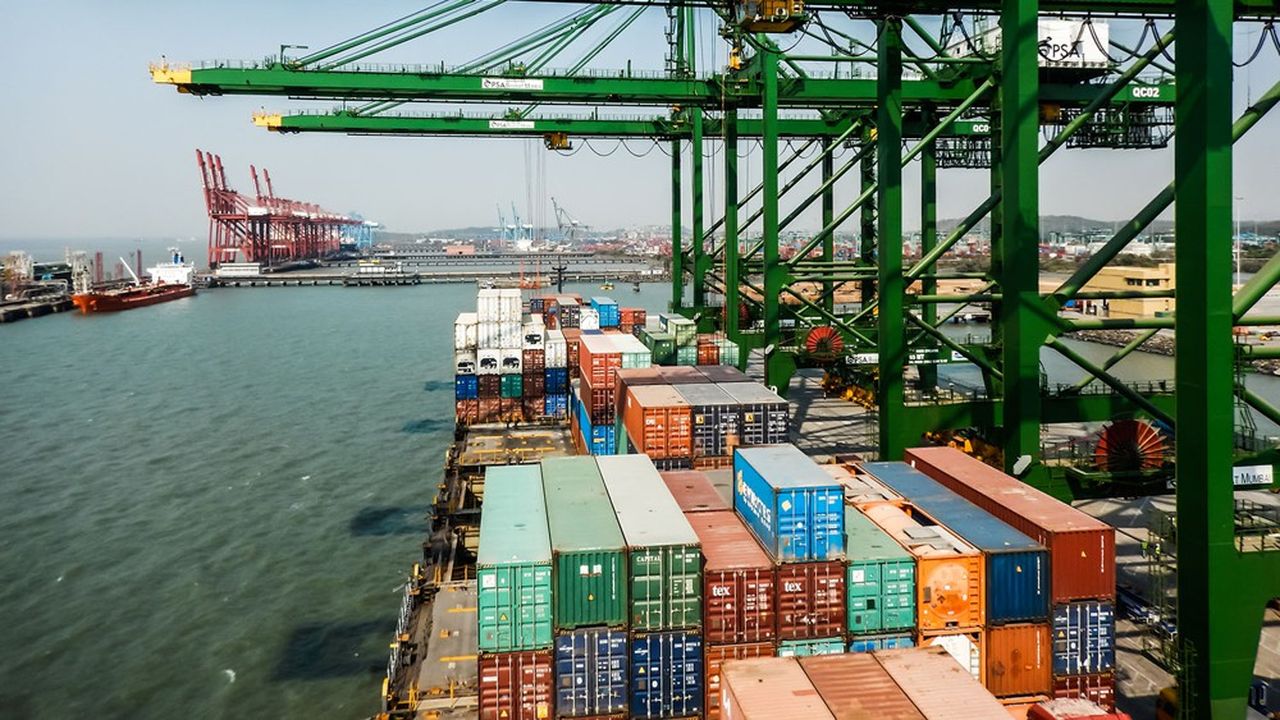
India’s exports-to-GDP ratio has declined over the past decade, despite India’s “growing economic clout,” a recent World Bank report said. “A key factor in this decline has been rising import duties on key intermediate inputs, which have led to higher production costs and made producers less competitive in the international market,” it said. “A resurgence of protectionist measures including tariffs and non-tariff barriers is limiting India’s openness,” the report said.
Return of protectionism
Since 2017, the government of Narendra Modi has started to increase – sometimes erratically – customs duties, reversing a long process of opening up that began with the opening of the economy in the early 1990s. Average import duties have gone from 13.4% in 2016 to 17.6% in 2019 and finally 18.1% in 2022.
India now has higher tariffs than most comparable emerging economies. These “tariff and non-tariff barriers are increasingly affecting India’s participation in international trade,” the report said.
New Delhi’s policy may seem bizarre, as the government likes to blow hot and cold when it comes to trade policy. For example, India aims to become a major manufacturer of mobile phones and has implemented several support plans for manufacturers setting up in the country since 2016. But at the same time, various customs duties for various intermediate consumables have been revised upwards, which has directly affected manufacturers. This “threatens the competitiveness of the sector compared to countries with lower customs duties, such as China or Vietnam,” the report explains.
Negative effect on employment
The dilution of exports relative to GDP has negative consequences on the labor market. Thus, the proportion of jobs directly linked to exports has fallen from 9.5% of the total in 2012 to 6.5% in 2020. Yet this is one of the needs of the Indian economy: to provide millions of unskilled jobs to a youth that remains largely idle.
The remedy? Diversify exports by “developing low value-added sectors, such as textiles, footwear and leather goods, which have traditionally generated many jobs, especially for women,” explains the World Bank. Female employment is one of the major failures of the Indian economy. Only 23% of Indian women have a job or are looking for one. This figure is well below the activity rates of other emerging countries.
Missed opportunity
The time is ripe for this diversification. In China, low value-added economic activity has declined significantly as wages have risen. And India would like to take over from its great rival. But the Asian giant is struggling to recover the market share lost to Beijing. “Bangladesh, Vietnam and even developed economies such as Germany and the Netherlands are the primary beneficiaries of China’s declining market share,” the report points out.
This phenomenon is reflected, for example, in a decline in India’s share of global exports of textiles, clothing, leather products and footwear. This had jumped from 0.9% in 2002 to 4.5% in 2013 – just before Narendra Modi came to power – before finally falling back to 3.5% in 2022. By way of comparison, Vietnam represented 5.9% of global exports in this sector in 2022, compared to 3% in 2013. For Bangladesh, it was 5.1% compared to just over 2% ten years ago.
Here too, the increase in Indian customs duties has played a major role in this disconnect. For the textile industry, average customs tariffs have increased by 13 percentage points since 2017, which has significantly increased production costs for manufacturers. “Because of rising costs and falling productivity, India’s share of apparel exports has declined (…), precisely at a time when China was losing export market share,” notes the World Bank report.







